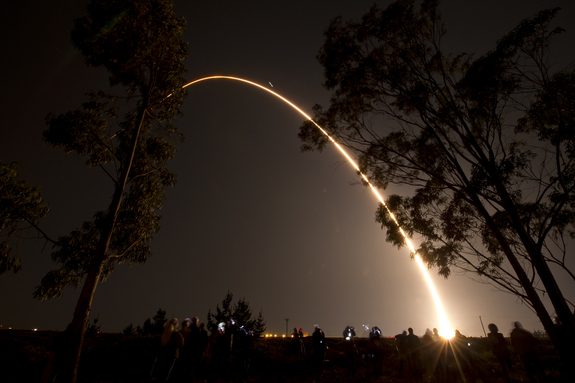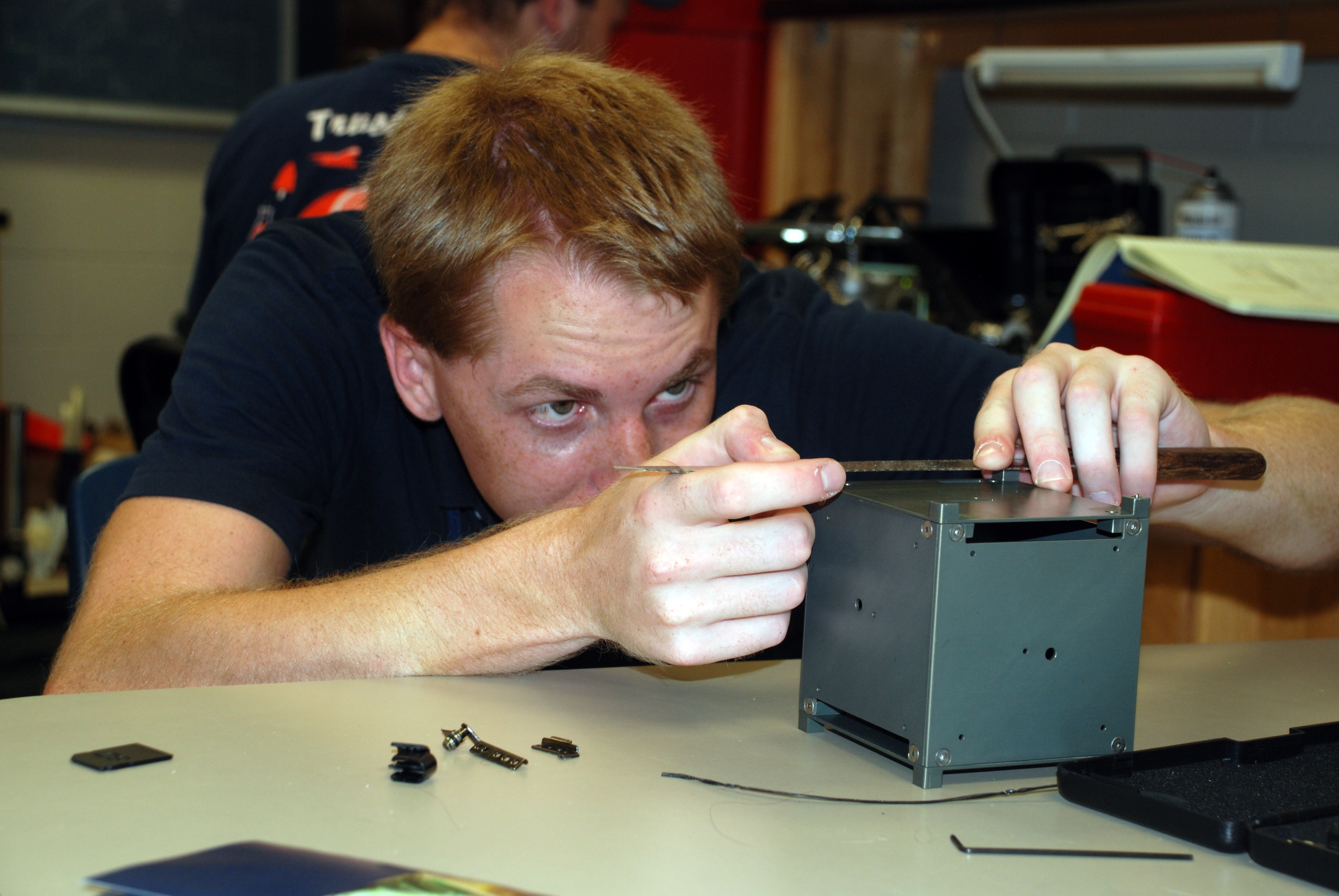AubieSat-1 mission is a success
The Auburn University student-built satellite, AubieSat-1, was the first student-built CubeSat in the state to be accepted by NASA for launch. A “CubeSat” is a 4-inch, cube-shaped satellite that is used primarily for research. The satellite launched into space at 2:48 a.m. PDT on Oct. 28, 2011, from Vandenberg Air Force Base in California aboard a NASA-sponsored Delta II rocket. For approximately eight months, AubieSat-1 orbited the globe, and numerous universities and individual ham radio operators signed up to help track the satellite. The first signal was received shortly after launch from Vigo University in Spain. The signal was heard as far away as Japan and as nearby as the University of Alaska, and daily information arrived to the AubieSat-1 team via an amateur radio operator named Mike Rupprecht, who lives in Germany.
The AubieSat-1 team members were also able to hear the AubieSat-1 signal from the campus control center located in Allison Lab. However, the students had difficulty communicating with the satellite from the control center. Once released from the rocket, AubieSat-1 was supposed to have two antennas deploy – one for receiving signals from Auburn University and one for sending signals back to Auburn.
“We suspect that our antennae didn't deploy in space,” explained AubieSat-1 team member and wireless engineering major, Andrew Slaughter. “We realized that in order for the satellite to ‘hear’ our commands, we would have to send a very powerful signal to it.”
Because the signal at the Auburn University control center was not powerful enough to reach the satellite, the AubieSat-1 team enlisted the help of David Klumpar, research professor and director of the Space Science and Engineering Laboratory at Montana State University. Slaughter, along with electrical and computer engineering major Alex Lewis and J-M Wersinger, professor emeritus in the Department of Physics and Auburn University Student Space Program director, travelled to Montana State University and borrowed their powerful signal transmitter.
“Montana State has an amplifier that helped to boost our command transmission to approximately 1.5 kilowatts,” Slaughter said. “We managed to transmit several commands to the satellite and hear appropriate responses from the satellite. We transmitted our ‘ping’ command which basically asks the satellite to respond in Morse code with the phrase ‘War Eagle,’ which it did. We were also able to send our science and housekeeping commands, which have the satellite transmit science data for our science mission, which includes things like temperatures and voltages.”
Two faces of AubieSat-1 were encapsulated in a plastic film. Temperature and voltage data will be used to measure the decrease of solar cell efficiency over time on the protected versus non-protected solar panels.
Currently, AubieSat-1 team member and electrical and computer engineering major Kyle Owen, with the guidance of John Klingelhoeffer, who is the AubieSat-1 technical adviser and retired president of Intelsat, are transcribing the Morse code files received by the satellite.
“I have worked on this project for my entire career at Auburn and after you put so much time into something you just want to see it succeed, and this project did,” said Slaughter. “It gets you excited for the next project when you have success on the first.”
The program, which is operated solely by undergraduates, has seen approximately 100 students who have worked on the current satellite. Construction of AubieSat-1 was conducted through the Auburn University Student Space Program in the College of Sciences and Mathematics. The program promotes team work and workforce development through hands-on experience. AubieSat-1 is sponsored by Auburn University and the Alabama Space Grant Consortium. For more information on AubieSat-1, go to the website at www.space.auburn.edu.
Latest Headlines
-
02/12/2025
-
02/11/2025
-
02/10/2025
-
01/30/2025
-
12/03/2024



